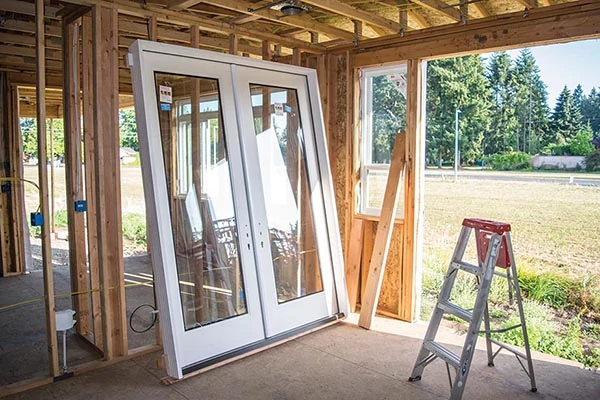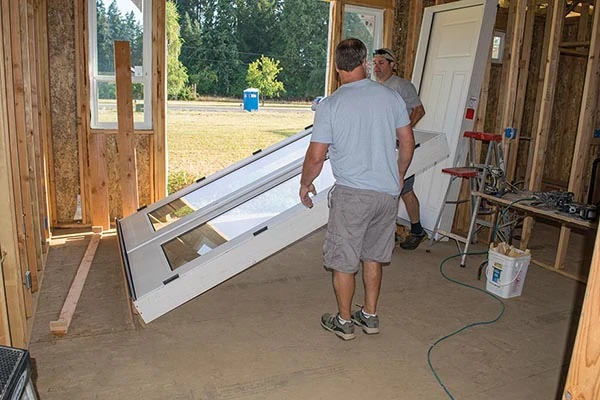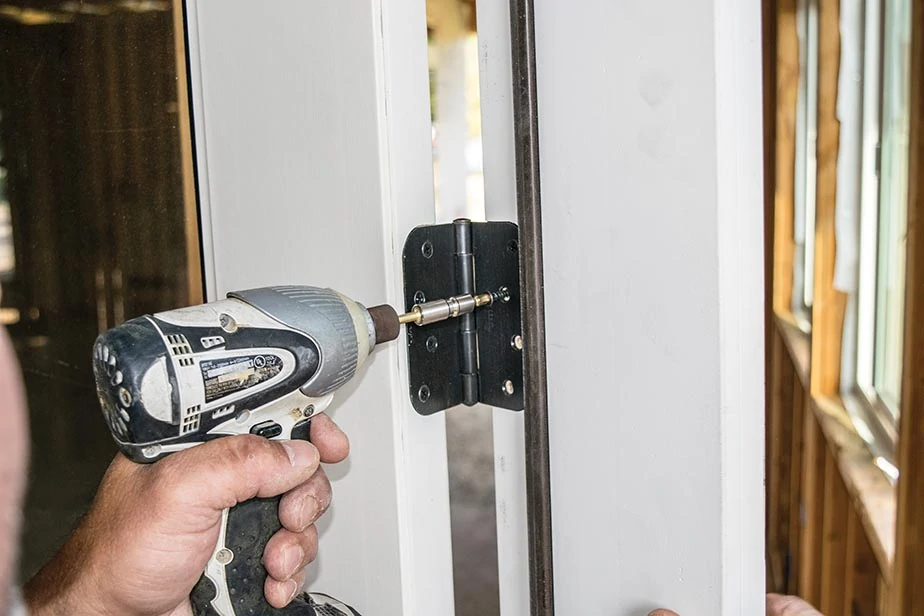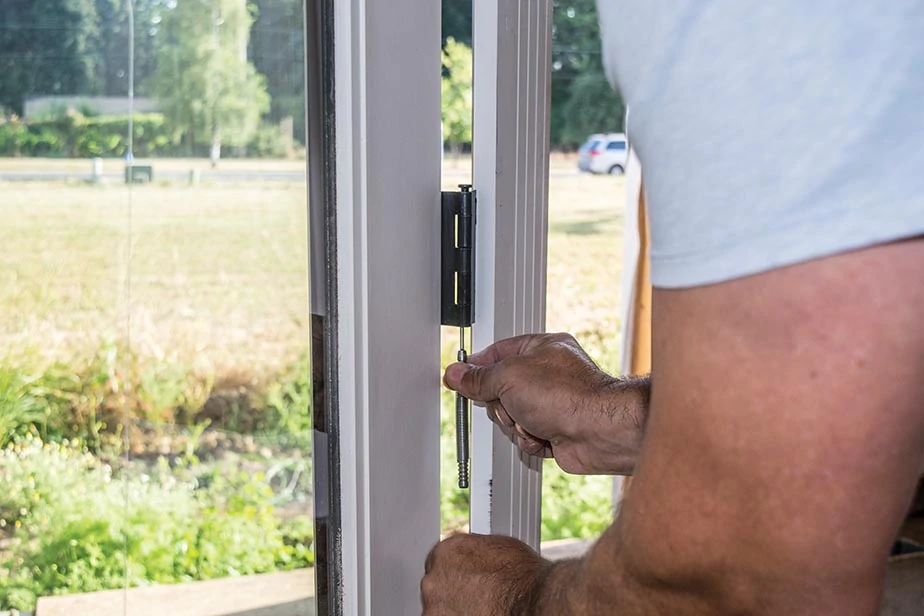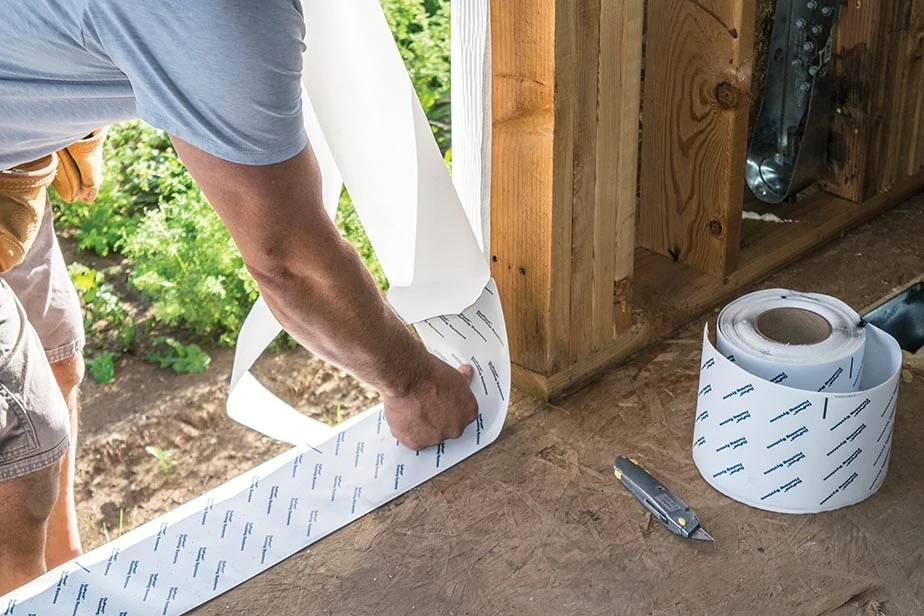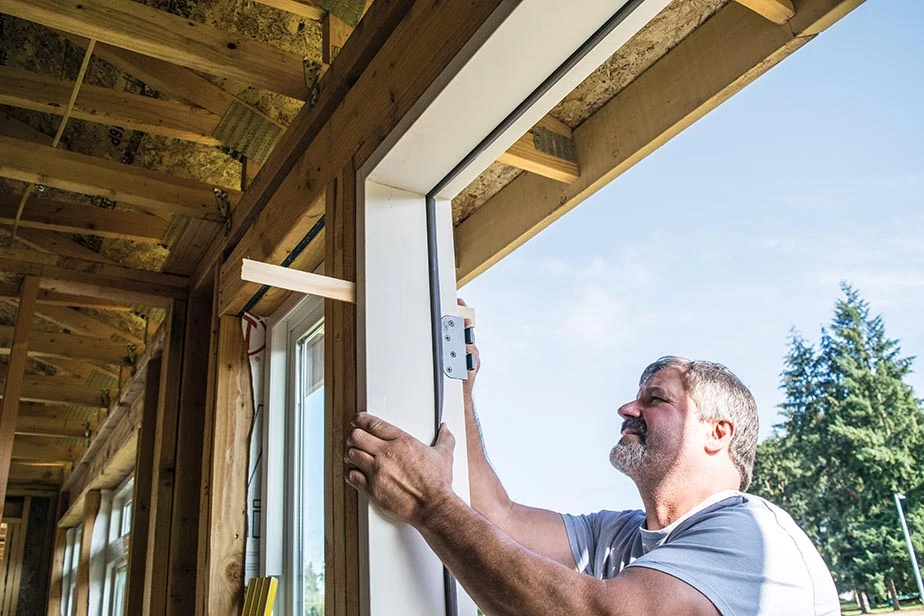By Larry Walton
You’ve decided on double French doors for your project, but you’re a little concerned about how the door swing will affect your interior design plans. Have you considered swinging the doors to the outside rather than into the house?
Out-swing doors could offer a solution to your traffic flow concerns, especially if you want to use the interior wall space adjacent to the doors. Additionally, you’ll be able to make the grand gesture of swinging both doors open as you present your newly completed patio project to visitors.
Out-swing exterior doors require a different type of threshold so you can’t just buy a stock set of standard swing, pre-hung doors and turn them around. Also, an out-swing door assembly must include a way to secure at least one hinge pin on each door, so intruders cannot remove the hinge pins to gain entrance.
Another important factor to consider with swinging doors is the location and weather exposure the doors may endure. In general, swinging exterior doors should be located where an extended eave, porch or patio cover protects the doors from direct exposure to rain, because water can present a real challenge to typical weather stripping. This is true for both in-swing and out-swing doors.
STEP BY STEP
Our client ordered a set of doors pre-hung for out-swing installation.
First step was to remove the blocks, braces, corner protectors and staples. Note: If the doors come with protective covers on the glass, leave them in place until you are sure they are no longer needed as masking for door painting.
We had enough floor space available to lay the door assembly down to remove the protective skids from under the threshold.
We located the hinges with the locking pins and removed the screws from the hinge leaves.
On the remaining hinges, we left the leaves in place and removed only the hinge pins to take the doors off the door jamb. We thought it best to start the jamb installation without the doors this time, because the outside deck was not yet built.
The framers left some extra room in the vertical rough opening. Sometimes we support the threshold with a strip of sheeting to ensure clearance for interior swinging doors, but these doors swing out, so we filled in the space at the header.
We installed all of the required vapor barrier products, which will vary by location and code requirements.
After checking the floor for level, we moved the jamb into the opening.
Lining up the outside of the jamb with the exterior sheeting, we tacked it into place near the top hinge with a 2-1/2-in. finish nail.
We looked for shim locations and shim directions that would offer the most support for the areas near the hinges. Where the framing boards were flat and square, we stacked two shims in opposite directions. Often, however, one shim can be used to better fill a tapered gap.
We filled the gap between jamb and trimmer with a shim and tacked it in place near the second top hinge.
We put the doors back on their hinges before completing the installation.
In order to install the door jamb, we had to have one guy on the outside checking gaps and door alignments while the guy on the inside shimmed and nailed the jamb into place.
A straightedge on the jamb helped align the jamb for shimming and nailing.
A shim and nails near the header strike plate will help prevent sagging in the span of the jamb header.
We made sure the doors were on plane, aligned with each other, thoroughly fastened and operating smoothly before leaving them for the siding crew to button up.
Side Note
Choosing a Door Texture and Finish
The door of your home gives any visitor their first impression, so you want to achieve the perfect look with its texture and finish.
You have a variety of options, including wood-grained or smooth; fiberglass or steel; stained or painted; and your choice of bold or neutral color. Wood-grained doors can be stained or painted, while smooth doors can be painted almost any color you can imagine. Fiberglass provides a wood-like look and durability, while steel doors offer a lower price point.
Insulated fiberglass doors often feature a realistic wood-grain appearance and a convincing texture to match, but they’re much more energy-efficient than real wood and require less maintenance. Fiberglass doors will never rot or warp like wood.
If you’re looking to make a bolder color statement, consider a smooth, paintable fiberglass door. These doors provide you with a blank canvas and hold the paint for lasting color. Decorative door glass and style options provide the ability to choose a look that matches the distinct style of your house.
Insulated steel doors provide any home with style and affordability. These doors offer numerous styles, design and glass options, and the ability to customize the color. Styles range from triple-shadowed panel embossments to simpler more traditional designs.



